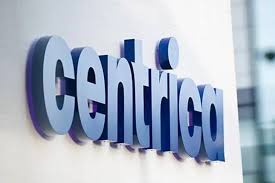Next PLC (LON:NXT) has announced its latest Trading Statement.
SUMMARY
Full price sales during November and December have been better than we anticipated.
| ● | In the nine weeks to 30 December, full price sales1 were up +5.7% versus last year. This was £38m better than our previous guidance of +2.0% for the period. |
| ● | We have increased our full year profit before tax guidance by £20m to £905m, up +4.0% versus last year. Of the £20m increase, £17m came from the sales beat to date and £3m comes from an upgraded forecast for full price sales in January. |
1. Full price sales are VAT exclusive sales of items sold at full price in Retail and Online plus NEXT Finance interest income. They exclude items sold in our Sale events, Clearance operations and through Total Platform. They are not statutory sales.
Initial guidance for the year ahead:
| ● | Guidance for full price sales on continuous business to be up +2.5%. After accounting for the effect of recent acquisitions, we expect Group sales, including subsidiary companies2, to be up by +6.0% see page 4. |
| ● | Guidance for Group profit3 before tax for the year ahead to be up +5.0%. |
2. In this Trading Statement we use the term subsidiaries to include all equity investments including those over which we do not have full control, such as JoJo Maman Bébé.
3. Group profit before tax is not statutory profit. Statutory profit includes (1) an exceptional accounting (non-cash) gain on the Reiss transaction and (2) the minority interests in companies which are fully consolidated in NEXT’s accounts (i.e. FatFace, Joules and Reiss). By excluding the minority interests that we do not own, Group profit given here is the profit attributable to NEXT plc shareholders.
This statement is divided into two sections: Part One focuses on the current year, and Part Two gives sales and profit guidance for the year ahead.
PART 1: THE CURRENT YEAR
Full Price Sales to 30 December 2023
The table below sets out the full price sales performance for the nine weeks to 30 December and for the second half to 30 December. The performance in both Retail and Online was ahead of our expectations. Online performed particularly well, which we believe was as a result of service improvements versus last year.
| Full price sales (VAT exclusive) versus last year | Q4to 30 December | Second halfto 30 December |
| Online | +9.1% | +7.7% |
| Retail | +0.6% | +0.0% |
| Total Product full price sales | +5.6% | +4.7% |
| Finance interest income | +6.7% | +7.0% |
| Total full price sales including interest income | +5.7% | +4.8% |
The chart below sets out Q4’s weekly performance versus last year. The last three weeks’ sales performance was distorted as a result of Christmas Day this year falling after the weekend; so the performance of the last three weeks is best understood by looking at the growth over these weeks combined, which was +4.6%.
End-of-Season Sale
Stock has been well controlled. We went into the end-of-season Sale with -12% less surplus stock than last year. We expect clearance rates over the life of the Sale to be broadly in line with last year.
Sales and Profit Guidance for the Current Year
Our revised guidance for the current year is set out below, along with our previous guidance given in November. Of the £20m increase in profit, £17m came from the £38m sales beat to date, and £3m comes from an upgraded forecast for full price sales in January.
Please note this guidance excludes the exceptional accounting (non-cash) gain of circa £110m following our acquisition of the additional equity stake in Reiss.
| Guidance for the full year 2023/24 | Full year guidance | Versus 2022/23 | November guidance | Versus 2022/23 | |
| Full year full price sales | £4.78bn | +4.0% | £4.74bn | +3.1% | |
| Group profit before tax | £905m | +4.0% | £885m | +1.7% | |
| Pre-tax Earnings Per Share | 746.3p | +6.4% | 730.2p | +4.1% | |
| Post-tax Earnings Per Share | 569.9p | – 0.6% | 557.7p | – 2.7% |
Cash generation and net debt
Cash generation remains strong in the year and we anticipate that we will generate circa £100m more surplus cash than the previous guidance given in September. This movement is explained in the table below.
| Cash flow walk forward: September to January guidance | £m (e) | |
| Increase in profit before tax (£905m versus £875m guidance given in Sept) | 30 | |
| Corporation Tax on additional profit | (8) | |
| Net profit impact | 22 | |
| Cash into the Employee Share Option Trust (ESOT) | 25 | |
| Cash in acquired businesses | 25 | |
| Higher customer payments in the NEXT Finance business | 18 | |
| Other | 10 | |
| Increase in surplus cash | 100 |
The cash expected to flow into our ESOT has increased by £25m. This is as a result of more colleagues exercising their share options and purchasing shares from the ESOT, following the recent increase in our share price.
We now expect our net debt (excluding lease liabilities) to close the year at around £700m, which compares to £797m in the prior year.
PART 2: THE YEAR AHEAD
Note on the treatment of brand amortisation
Going forward we will be excluding the amortisation of the brands we purchase from our headline profits. The rationale for this convention and its effects are set out in Appendix 1 to this document on page 7. For the purposes of comparisons with the current year, we will also exclude amortisation of acquired brands4 from this year’s expected number. The effect of this change is to add £10m to the current year’s headline profit, taking it to £915m, and £19m to next year’s headline profit.
4. Includes the brand and any other related intangible assets acquired in the business.
GUIDANCE FOR 2024/25
A summary of guidance for 2024/25 is set out in the table below. The sections which follow explain our guidance for sales, profit and cash flow in more detail.
| Guidance for the full year 2024/25 | % Versus 2023/24 | Full year £ (e) |
| Full price sales | +2.5% | |
| Total Group sales including subsidiary companies | +6.0% | |
| Group profit before tax (excluding £19m of amortisation) | +5.0% | £960m |
| Earnings Per Share (excluding £19m of amortisation) | +4.6% | 603.4p |
| Net debt (excluding lease liabilities) | – 10.7% | £625m |
Full Price Sales
We have assumed that full price sales for the core NEXT business (Retail, Online, LABEL and NEXT Finance interest income) will be up +2.5% against the current year. This increase excludes any increase in Group turnover relating to the acquisition or growth in subsidiary companies and equity investments.
On the face of it, the consumer environment looks more benign than it has for a number of years, albeit there are some significant uncertainties. The table below summarises the positive factors and risks we have balanced in our sales guidance for the year ahead:
| Positive Factors | Risk Factors | |
| Wages rising faster than pricesUK wages look set to rise in line with, if not more than, Consumer Inflation (CPI). For many consumers this will ease the pressure they have felt on their cost of living for the last eighteen months.Zero inflation in our selling prices Cost price inflation in our own products is diminishing, mainly as a result of decreasing factory gate prices. We believe that this will allow us to maintain zero inflation in selling prices5, along with a small increase in bought in gross margins6. This will be the first time in three years that input prices have been stable. | Weakening employment market? Although rising wages are good for sales, it seems likely that they will result in reduced employment opportunities in the wider economy. Vacancy rates in the UK have already fallen over the last six months and, if that trend continues, it is likely to result in increased unemployment. Mortgage rates?Fixed rate mortgage deals will continue to expire, and require refinancing at higher rates. Supply chain risks?Difficulties with access to the Suez Canal, if they continue, are likely to cause some delays to stock deliveries in the early part of the year. |
5. Price increases are solely assessed on the basis of items that we also sold last year (i.e. like-for-like goods). There is no comparative price for new designs. These like-for-like items account for around 30% of our sales.
6. The difference between the landed cost price of our goods and their original (full price) selling price (VAT ex.)
Total Group Sales
Total Group sales, including subsidiary companies and equity investments, are expected to grow by +6.0%. This turnover figure is calculated using our share of our subsidiaries’ turnover. For example, we own 74% of Joules so we include 74% of their sales7 in our top line. For a more detailed explanation of how we will report headline Total Group sales going forward please see Appendix 2 on page 8.
7. This figure excludes their LABEL sales (100% of which are included in our Online sales) and Total Platform commission.
Group Profit Guidance for the Year Ahead
Profit Walk Forward from 2023/24(e) to 2024/25(e)
The table below walks forward our guidance for profit before tax from the expected profit for the year ending January 2024, to our guidance profit for the year ending January 2025.
| £m | ||
| Profit before tax 2023/24 (e) | 905 | |
| Add back brand amortisation in 2023/24 | +10 | |
| Profit before tax (excluding brand amortisation) 2023/24 (e) | 915 | |
| Profit from full price sales, Total Platform and subsidiaries | ||
| Profit from +2.5% (£120m) increase in full price sales | +38 | |
| Additional profit from Total Platform services | +6 | |
| Additional profit from Total Platform equity (including new acquisitions) | +28 | |
| Total profit from full price sales, Total Platform and subsidiaries | +72 | |
| Cost increases | ||
| Wage inflation (including third-party wages, e.g. couriers) | – 60 | |
| Warehouse and distribution | – 22 | |
| Technology | – 17 | |
| Markdown (higher surplus and lower clearance rates) | – 10 | |
| Total cost increases | – 109 | |
| Cost savings | ||
| Staff incentives | +24 | |
| Warehouse and distribution (including operational efficiencies) | +18 | |
| Bought-in gross margin | +17 | |
| Electricity rate | +12 | |
| Joules: prior year one-off integration costs not repeating | +9 | |
| Other cost savings | +2 | |
| Total cost savings | +82 | |
| Profit before tax (excluding amortisation) 2024/25 (e) | 960 | |
| PBT versus 2023/24 | +5.0% |
Cost Increases and Cost Savings
The largest cost increase will be wage inflation, which we expect to be around £60m. Within this, around £25m is the difference between the expected rate of general UK wage inflation, and the rise in the National Living Wage. To mitigate some of this cost increase, we plan to recover c.£17m by increasing our bought-in gross margin8 by +0.4%. Despite this increase in margin, we do not anticipate that selling prices will increase in the year ahead. In fact, without the anticipated margin gain, prices would have fallen marginally as a result of continued reductions in factory gate prices.
8. The difference between the landed cost price of our goods and their original (full price) selling price (VAT ex.).
Cash Generation, Shareholder Distributions and Net Debt
We expect to generate around £600m of operating cash flow after deducting interest, tax and capital expenditure, but before investments and distributions to shareholders.
In our guidance we have assumed that, after paying ordinary dividends of circa £250m, we will return £275m of surplus cash9 to shareholders by way of share buybacks in the year ahead. This figure will be lower if we make further investments. We estimate that these buybacks, along with buybacks in the current year, will boost pre-tax Earnings Per Share by +1.5% next year. After paying ordinary dividends and completing our planned share buybacks, we intend to retain the remaining £75m of surplus cash, further reducing our net debt.
9. Surplus cash refers to cash flow after ordinary dividends, interest, tax, capex and funding any movement in our customer receivables.
| Cash flow and shareholder distributions £m | 2024/25 (e) |
| Cash generation before shareholder distributions | 600 |
| Ordinary dividends | (250) |
| Share buyback or investments | (275) |
| Remaining surplus cash | 75 |
Anticipating the maturity of our August 2025 Bond
The £100m reduction in net debt that we expect in the current year, along with the anticipated £75m reduction in the year ahead, result in a total reduction in net debt of £175m. This means that if we retain a further £75m the following year (i.e. year ending January 2026), we will not have to refinance the £250m bond due in August 2025. This gives us the flexibility to avoid the bond market if long term corporate interest rates remain at their current (high) level.
FULL YEAR RESULTS ANNOUNCEMENT
We are scheduled to announce our results for the full year ending 27 January 2024 on Thursday 21 March 2024.
APPENDIX 1: NOTE FOR ANALYSTS ON THE ONGOING TREATMENT OF BRAND AMORTISATION
As NEXT acquires new businesses, the accounting effect of amortising the value of acquired brands10 will increasingly understate the underlying profitability of the Group. Amortisation is a non-cash accounting adjustment similar to depreciation; accounting standards require that the value of brands is amortised over their life. In the case of FatFace and Reiss we are amortising the brand over 15 and 25 years respectively. This amortisation assumes that the value of these brands will drop to zero over the amortisation period; in reality it is more likely that they will increase in value than fall to zero.
10. Acquired brands is used to describe the brand and any other related intangible assets acquired in the business.
By way of example: If NEXT plc was acquired, at its current market value, by a shell company that issued new shares in exchange for the company’s current shares then, under statutory reporting, the acquiring company would then add the brand to the balance sheet and amortise it over the ‘life’ of the asset. A conservative accounting approach would result in a life of, say, 25 years, which would result in an annual amortisation charge of around £370m. So, despite having exactly the same cash flow, assets and debt as the existing company, the new company’s reported profit would be around 40% lower than prior to the transaction – clearly not a true representation of the company’s value.
So from 2024/25 we will adopt the accounting convention used by many acquisitive Groups, and report our ‘headline profits’ excluding brand amortisation costs. In addition, to ensure that comparisons to the current year are consistent, we will also re-state the current year’s headline profits to exclude brand amortisation.
EBITDA?
We will, of course, be including the depreciation and amortisation of other assets with a limited life. For clarity, we will not be joining the companies that quote ‘EBITDA’ as a key measure of success. Capital spent on assets or technology that decline in value, and ultimately require replacement, must be accounted for in any reasonable assessment of financial performance.
Re-stated brand profits last year, this year and guidance for next year
The table below sets out the impact of removing brand amortisation from our actual headline profits last year, our expected profits in the current year and the year ahead.
| Last year | Current year | Next year | |
| 2022/23 | 2023/24 (e) | 2024/25 (e) | |
| Group profit before tax (including brand amortisation) | £870.4m | £905.0m | £941.2m |
| Add back brand amortisation | +£4.3m | +£9.7m | +£18.8m |
| Group profit before tax (excluding brand amortisation) | £874.7m | £914.7m | £960.0m |
| Year on year growth | +4.6% | +5.0% | |
| Pre-tax EPS (excluding brand amortisation) | 704.8p | 754.3p | 804.5p |
| Year on year growth | +7.0% | +6.7% | |
| Post-tax EPS (excluding brand amortisation) | 576.8p | 576.6p | 603.4p |
| Year on year growth | – 0.0% | +4.6% |
APPENDIX 2: REPORTING OF HEADLINE GROUP SALES AND PROFITS GOING FORWARD
Reporting the headline PROFITS of subsidiaries in which we have a part share
As NEXT begins to acquire new businesses the question arises as to how we report the sales and profits from companies in which we own a part share. Accounting standards require our statutory accounts to consolidate the sales and profits of companies in which we have a controlling interest, but in the case of part ownership that means that we would start to include in our headline numbers, profit that our shareholders do not “own”. The answer, we believe, is to report our share of our subsidiaries’ profits; so if we own 50% of the business we will include 50% of its profits in our headline number.
In summary: We will include our share of subsidiary profits in our headline profit number for the Group.
Reporting the headline SALES of subsidiaries in which we have a part share
Until now we have not included the sales of subsidiary companies in our headline sales number. So far that has not been a problem, as they have not been material. As we acquire more businesses the risk is that we overstate the headline net margins of the Group by including our share of their profits but exclude all of their sales.
To address this problem, going forward, we will adopt the same convention for sales as we have done for profits. So if we own 50% of a company we will report 50% of its profits and 50% of its sales in our headline numbers (subject to the qualification below). By maintaining the proportion of sales and profits in line with our ownership we give a more accurate picture of our profit and net margins.
In summary: We will include our share of subsidiary sales in our headline sales number for the Group.
ISSUE: Avoiding the double counting of LABEL sales
Historically we have always included LABEL sales within our headline sales number, whether goods are sold on a wholesale or commission basis11 and we will continue with this convention going forward. However, a subsidiary company’s sales on LABEL will also be reported within their sales numbers. So if we include our share of their sales in our headline sales, including their LABEL sales, we will double count our share of their LABEL sales.
11. As previously explained, the gross transaction value of LABEL items sold on commission are not statutory sales but are included in our headline numbers.
To avoid this problem, we will exclude subsidiaries’ LABEL sales from their sales before accounting for our share of their sales. So if we own 50% of a subsidiary that turns over £100m, of which £20m are LABEL sales, then we will add 50% of £80m (i.e. £100m – £20m) to our headline sales number.
On the same logic, we will also deduct the value of Total Platform commission from their sales.
In summary: We will deduct subsidiary sales on LABEL before accounting for our share of their sales.
Statutory reporting
Our statutory results will, of course, continue to conform to statutory reporting requirements. A reconciliation between the NEXT headline financial measures and their statutory equivalents will be provided in our Annual Report and Accounts. This will ensure readers can clearly see the impact of differences in approach.







































